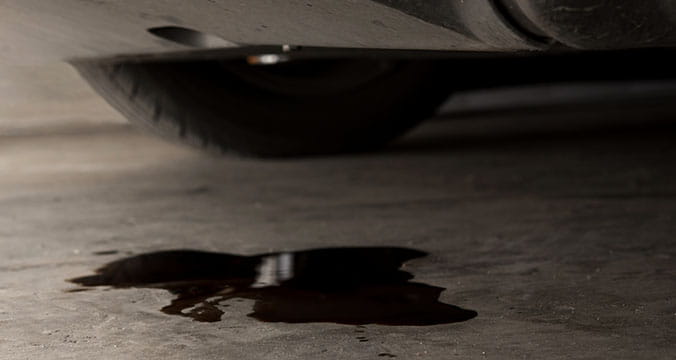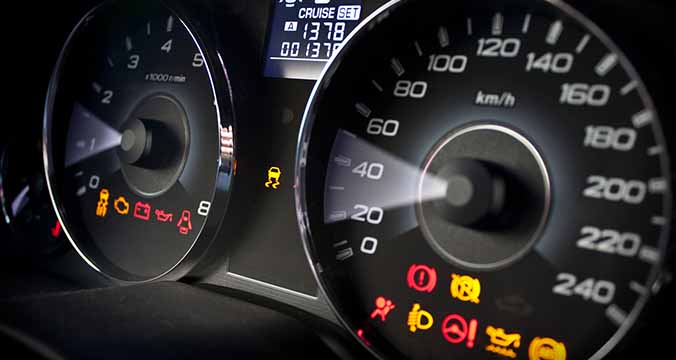You know the feeling. It’s in the pit of your stomach, right when you pull out of the driveway and notice a dreaded puddle where your car was. What could it be? How much is it going to cost to fix? There could be several culprits, and you shouldn’t just depend on the color to help you determine what the leak is—you have to get your other senses involved too.
For example, if the color is amber, dark brown, or even black, then the leak is likely motor oil, but there’s also a possibility that it’s brake fluid. Transmission fluid is normally red, but so is power-steering fluid. Antifreeze, also called engine coolant, has traditionally been green, but now it’s common to see it in other colors. So, where do you start if there are so many possibilities?
First, follow your nose. If it smells like gas, and you didn’t drip any on your vehicle when you last filled your tank, this is a big deal. You should never drive a car that’s leaking gas. It’s a huge safety risk. Instead, call a professional mechanic immediately.
If you’ve ruled out gas, start by taking a clean paper towel and dabbing it in the leak. This will help you get a closer look at the color, and you can smell the fluid on the paper towel. As you dab the fluid, be sure to note where the leak would have been under your vehicle. You can often match this to the vehicle diagrams in your owner’s manual to see what part it may have been coming from.
COMMON CULPRITS
Water draining from the air conditioner is normally colorless and odorless, and is typically found on the front on the passenger side. The good news? This leak is pretty standard and generally not a concern.
Engine oil when fresh is amber in color, and as it ages becomes darker shades of brown or even black. If you wipe the fluid on your finger, it will feel slick and will be difficult to wipe off. Oil leaks can come from a variety of engine parts, including valve covers and the oil pan, so it may take some investigative work to determine where the leak is coming from.
Power steering fluid is normally a shade of red. Check the fluid level in the power-steering reservoir and look for leaks around the reservoir and the hoses coming from it.
Transmission fluid is also red and will be slick to the touch, but be warned: it can come in other colors and can be thicker or thinner than engine oil. Check your transmission fluid level to see if there may be a leak. Directions on how to check your transmission fluid can be found in your owner’s manual.
Brake fluid can be light brown or even clear when it’s first added, but it darkens over time. Because brake fluid is vital to stopping your car, it’s important to get service immediately if you think you have a brake fluid leak. Check the brake fluid levels under the hood if you suspect a leak. The reservoir is normally on the driver’s side. That said, fluid gets pumped from the reservoir to the brake lines and wheels, so be sure to check these areas for leaks as well.
Engine coolant comes in a variety of colors but typically is green, yellow, or pink. You can validate the color of fluid in your vehicle by checking the coolant overflow tank. If there’s no fluid in the overflow tank, you may have discovered your problem. Coolant usually has a slimy texture and smells a bit sweet. For your own safety, be careful not to open the radiator cap to check things until the vehicle is cool.
KEEP CALM AND DRIVE ON
If you see just a drop or two of fluid under your car, don’t hit the panic button yet. You may not need to head to your mechanic immediately, especially if you have an older car. Minor leaks are prone to happen when you’ve racked up thousands of miles on your vehicle. But be sure to keep an eye on the situation to make sure the leak doesn’t quickly turn into a larger problem.














